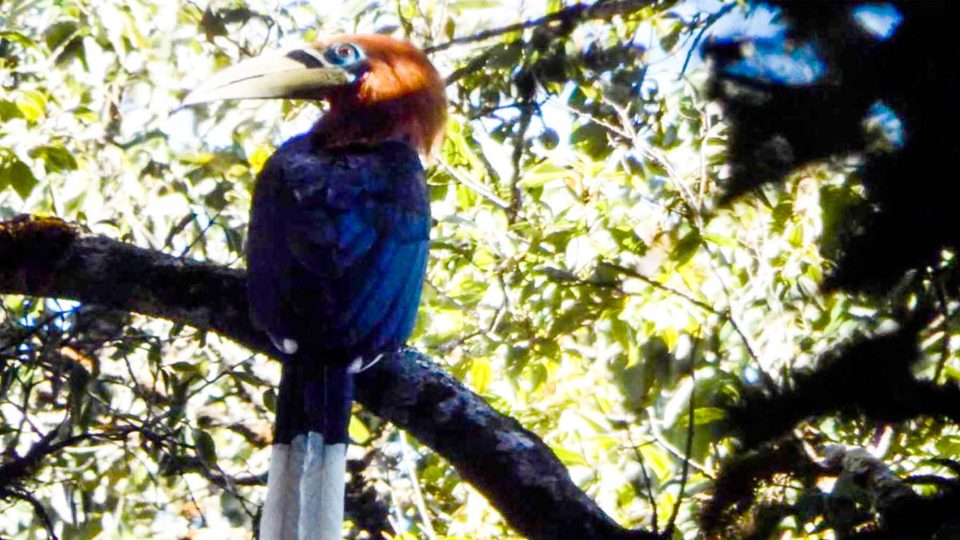Chin State’s hornbills may no longer be on the verge of extinction, as they were once thought to be. Conservationists have reported spotting 12 of the birds in the wild near the town of Mindat in the last few months, which is thought to be a sign of a healing population.
The great hornbill – one variety of hornbill that lives in Chin State – is the official state bird and a national symbol among Chin people. Though is not officially categorized as endangered, poaching and deforestation nearly wiped them out in Myanmar over the last few years. Some communities have reported going years without seeing one of the birds.
Myanmar authorities, in consultation with the Wildlife Conservation Society, have responded by launching conservation efforts throughout Chin State. As part of these efforts, township-level conservation committees collect reports of hornbill sightings and publish them every three months. The 12 sightings in the latest report are seen as a good sign, considering that 20 hornbills were spotted in the wild in all of last year, according to the Global New Light of Myanmar.
Although signboards have been erected around Chin State announcing that hunting and shooting hornbills is illegal, poaching continues to threaten the population. In October, eight live hornbills were confiscated from a motorbike driver in Magway Region who is thought to have been taking them to an illegal wildlife market in China. Hornbills sell for around K20,000 in Myanmar but can fetch as much as K60,000 per head in China.
The hornbills were released into the wild, and the smuggler was arrested.
In addition to Chin State, hornbills also live in the forests and islands of Tanintharyi Region. In May, the region’s chief minister sent three hornbills to Chin State are a gift in honor of Chin National Day and as a way to help prevent their extinction in that part of the country.




